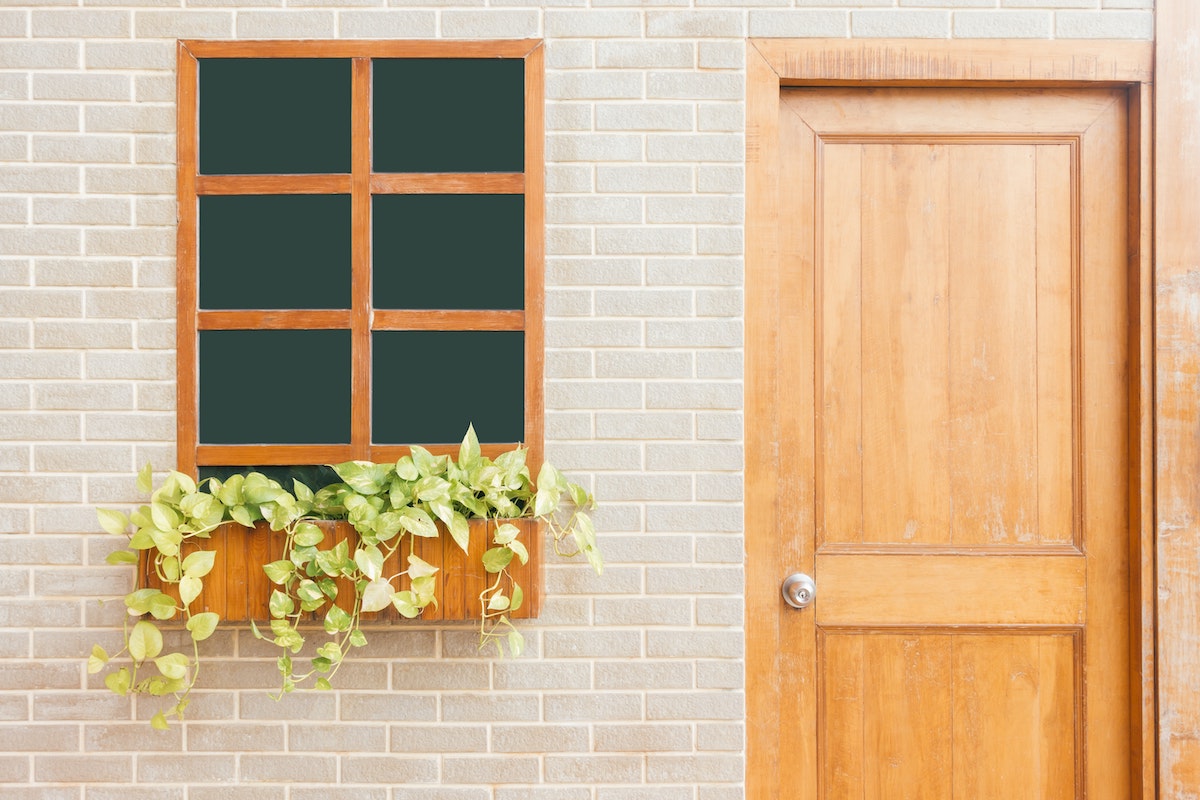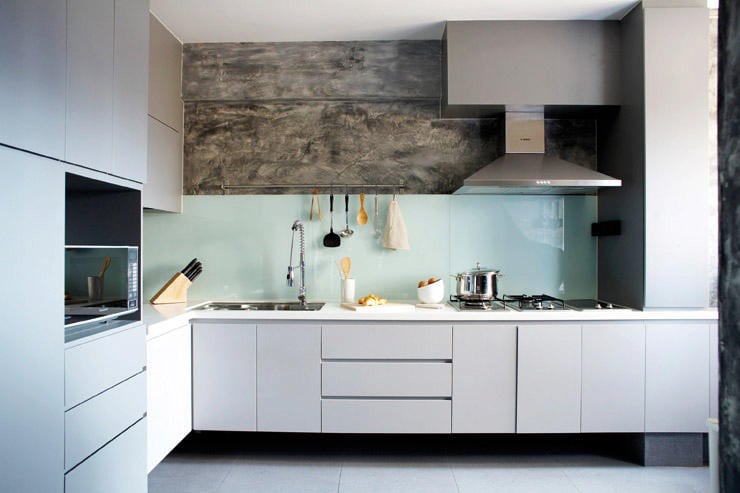
11 Best Wooden Door Companies in Singapore (Our Top Picks)
Companies | Services | Address | Ratings |
Homees Concierge Service | Homees Concierge Service Team - tell us what you need and we'll help get it solved. Talk to us today by giving us a call or Whatsapp us now. | 994 Bendemeer #03-04 Singapore 339943 | Average Rating: 5/5 |
AT Aliminium | - Window Grill Installation | 39 Woodlands Close #01-16 Mega@Woodlands Singapore 737856 | Average Rating: 5/5 |
Gate Door Window | - HDB Gate Replacement | 19 Woodlands Industrial Park E1 #01-01 (Main Office) Pioneer Point | Average Rating: 5/5 |
SG Doors | - Door Installation | 5 Sungei Kadut Ave Singapore 729642 | Average Rating: 5/5 |
Laminate Door | - HDB Gate Replacement | Tradehub 21, 18 Boon Lay Way, #03-133 Singapore 609966 | Average Rating: 5/5 |
Go Digital Lock Pte Ltd | - Metal Gates Installation | 1 Tampines North Drive 3, #02-06 Singapore 5284999 | Average Rating: 5/5 |
Pang Giap | - Stairs & Railing Installation | No 9 Defu Lane 3 #01-10L Singapore 539441 | Average Rating: 5/5 |
Siong Door | - Door Hardware | 1072 Eunos Avenue 5 #01-170 Singapore 409751 | Average Rating: 5/5 |
Goodhill Doors | - HDB Gate Replacement | 9 Sungei Kadut Street 5 Singapore 728956 | Average Rating: 5/5 |
Central Aluminium & Glass Construction | - Metal Gates Installation | 132 Woodlands Industrial Park E5 Singapore 757853 | |
Good Wood Doors & Joinery Works | - Door Hardware | Block 6 Lorong 8 Toa Payoh Industrial Park #01-1305 Singapore 319058 | |
Wee Ping Aluminium Contractor | - Door Installation | Tampines North Drive 1 #07-23 T-Space Singapore 528559 |
Hire Wooden Door Services In Singapore
View All Wooden Door Companies
Cost of Wooden Doors in Singapore
Wooden Door Service | Price Range (SGD) |
Installation (Hollow-Core) | 100–300 |
Installation (Solid-Core) | 300–800 |
Installation (Solid Wood) | 800–2,000 |
Door Customisation | 500–1,500 |
Door Repair | 150–500 |
Door Maintenance | 100–300 |
Useful read: The Latest Bedroom Door Trends
What Are the Different Types of Wooden Door Services?
If you’re looking for a complete home transformation, wooden doors will bring a functional and stylish upgrade to your HDB, condo, or landed property. Singapore’s wooden door companies deliver tailored solutions, from installing robust oak entrances to restoring pine interior doors. Whether you’re looking for hardwood or softwood options, most door suppliers offer solid wood, solid-core, or hollow-core doors. Built to endure Singapore’s humid climate, hiring a professional door contractor will ensure your wooden doors remain durable and elegant, whether in a Joo Chiat shophouse or a Marina Bay high-rise.
Installation of Wooden Doors
Skilled craftsmen provide door installation services that make wooden doors a lasting investment in Singapore’s tropical conditions. Reputable HDB door companies deliver installations compliant with HDB regulations, applying weatherproof finishes and fire-resistant features to ensure safety and efficiency in flats or condominiums.
Solid Wood Doors
Imagine a solid oak door greeting guests at your HDB flat’s entrance. Crafted from hardwoods like oak or teak, these doors are built for main entrances, offering sound insulation against the morning traffic on Bukit Timah Road. Installers typically secure them with heavy-duty frames and apply fire-resistant coatings to meet safety standards (a must for HDB homes). Their weight demands precise tools, ensuring a fit that prevents warping in humid weather and adds a timeless elegance to your property, lasting decades with proper care.
Solid-Core Doors
Solid-core doors feature particleboard or fibre cores and plywood surfaces, making them ideal for bedrooms or workstations where soundproofing is needed. Professionals typically use weather-resistant adhesives to counter Singapore’s high humidity, striking a balance between affordability and insulation. Their installation creates a peaceful retreat, and with the proper maintenance, you’ll get a door that’s both practical and elegant for busy urban homes.
Hollow-Core Doors
For a pantry or utility room in an HDB flat, hollow-core doors made from softwood, such as pine, offer a budget-friendly solution. Their lightweight core enables swift installation, making it ideal for rental properties or cost-conscious owners. Professionals ensure stability with accurate alignment, applying weatherproof coatings to resist damp air (think Singapore’s rainy season). These doors offer an attractive and practical option for low-traffic areas, blending functionality with a modern aesthetic.
Door Customisation and Design
Wooden door companies in Singapore create custom wooden doors for HDB flats or heritage shophouses, such as those in Joo Chiat. They carve intricate patterns on hardwood for landed properties, incorporate frosted glass into solid-core doors for condos, or shape oak to suit modern tastes. These designs withstand humidity while enhancing your home’s appearance.
Wooden Door Repair and Restoration
Damaged wooden doors? Vetted door contractors offer door repair services that can restore the functionality of damaged doors. They repair cracks in solid wood doors, reinforce hollow-core doors for condominium corridors, or reseal hardwood to prevent humidity-related swelling, ensuring durability in Singapore’s climate.
Maintenance and Sealing
Regular maintenance is essential for preserving wooden doors in Singapore’s humid environment. Services include sealing solid or solid-core doors against moisture, polishing hardwood for durability, and adjusting hinges for smooth operation in HDB settings. Consultations guide you in selecting suitable door types.
Useful read: Top Interior Design Singapore Trends to Style Your Home
How to Choose the Right Wooden Door Contractor in Singapore
Selecting a wooden door contractor in Singapore guarantees polished oak or softwood doors that enhance HDB flats, condominiums, or landed homes. Contractors deliver installations suited to Singapore’s humid climate, ensuring durability and aesthetic appeal. From Serangoon’s HDB estates to Chinatown’s heritage shophouses, the right professional crafts wooden doors that stand the test of time. Follow these steps to choose a contractor for your project, whether for a single bedroom door or a complete home renovation.
Evaluating Contractor Qualifications
A reliable contractor delivers quality wooden doors that resist Singapore’s humidity. Verify registration with the Housing and Development Board’s Directory of Renovation Contractors (DRC), which is mandatory for HDB projects to meet safety standards. Confirm experience with wooden doors, particularly solid wood or solid-core installations, as improper handling leads to warping in tropical conditions. Request a portfolio showcasing projects, such as fire-rated oak doors in Clementi HDB flats or solid-core doors in Marina Bay condominiums. Customer reviews reveal service reliability, ensuring the contractor provides durable, visually appealing wooden doors tailored to your specifications (essential for high-traffic urban homes).
Understanding Condo and HDB Door Installation Regulations
Singapore’s housing regulations prioritise safety and uniformity, especially for HDB flats. Main doors along fire escape routes, like corridors in Bedok estates, require half-hour fire-rated doors with a door closer and PSB label, necessitating an HDB permit. Condominium installations must comply with Management Corporation Strata Title (MCST) guidelines, often limiting door designs to maintain building aesthetics. Non-fire-rated interior doors, such as pine bedroom doors, require no permits but must comply with HDB or MCST regulations. DRC-registered contractors ensure compliance. For details, review HDB’s renovation guidelines at https://www.hdb.gov.sg/cs/infoweb/residential/living-in-an-hdb-flat/renovation/guidelines/building-works.
Questions to Ask Your Wooden Door Contractor
To select a trusted wooden door contractor in Singapore, ask these questions:
- Are you registered with the HDB Directory of Renovation Contractors for compliance?
- What experience do you have installing wooden doors in HDB flats or condominiums?
- Could you please share a portfolio of wooden door projects, including both solid-core and hollow-core doors?
- Do you manage HDB permit applications for fire-rated door installations?
- What steps do you take to protect wooden doors from humidity in Singapore?
- Are warranties provided for installation and materials, like oak or softwood doors?
- How do you align with MCST guidelines for condominium door installations?
Why risk a misaligned door in your HDB flat, condominium, or shophouse? Singapore’s wooden door companies provide expert installations for polished oak or budget-friendly pine doors. Choose a contractor who guarantees durability – explore professional door installation to connect with trusted professionals in Singapore today!
Why Hire a Professional Wooden Door Company in Singapore
Choosing a professional wooden door company in Singapore guarantees stunning, durable wooden doors for your HDB, condo, or landed home. Experts like those on Homees deliver precise installations, humidity-resistant oak or pine doors, and warranties for peace of mind in Singapore’s tropical climate. Don’t settle for less—compare and review the best wooden door companies in Singapore at Homees to find your perfect match today!
Frequently Asked Questions (FAQs) about Wooden Door Services in Singapore
What’s the difference between hardwood and softwood for wooden doors?
Hardwood, like oak, is sturdy and suitable for outdoor wooden doors. Softwood, such as pine, is less expensive and works well indoors, but requires more care to prevent wear. Hardwood lasts longer, while softwood is more suitable for tight budgets.
Are wooden doors suitable for Singapore homes?
Absolutely, wooden doors shine in Singapore’s HDB flats and condos if they are well-maintained. Solid oak doors handle humidity and muffle city noise in places like Jurong. Regular sealing prevents warping, and fire-rated options boost safety. Enquire with local wooden door companies for a recommendation on humidity-proof doors for your home.
Can I DIY install a wooden door?
DIY poses various risks, from improper installation to fines from the HDB. Hiring a professional wooden door company in Singapore will ensure a snug fit for lasting results. Save time and avoid issues by getting a free quote from Homees for expert installation.
Do wooden doors require maintenance in Singapore?
Yes, wooden doors require some simple maintenance in Singapore’s humid climate. Wipe them with a damp cloth and mild soap, then dry well. Seal or polish every 1-2 years to block moisture and keep them crack-free.
What are the latest wooden door trends in Singapore?
In 2025, Singapore homeowners love minimalist oak wooden doors for HDB flats and carved teak for landed homes. Frosted glass panels in solid-core doors are also trending for modern interiors. Discover the latest trends in incorporating wood into interior design, inspired by top wooden door companies in Singapore.
How can I find reliable wooden door companies in Singapore?
Finding reliable wooden door companies in Singapore is easy with Homees. Browse through our list of verified providers, check their portfolios for HDB or condo projects, and read reviews to ensure quality. Start your search at Homees to connect with top wooden door experts for your home.
Homees.co
Trust Homees.co to find top wooden door companies in Singapore. With vetted, DRC-registered contractors and user reviews, Homees ensures quality for HDB or condo projects. The platform simplifies your search, matching you with professionals skilled in Singapore’s humid climate. Visit Homees.co to connect with experts for durable, stylish wooden doors today!
We’re here to improve your home
Speak to hundreds of reliable pros, view their gallery, inspirations, and know the best prices with our resources.
Have full control over your home improvement projects with Homees.





